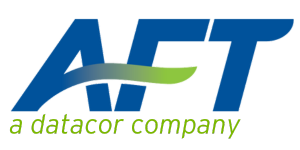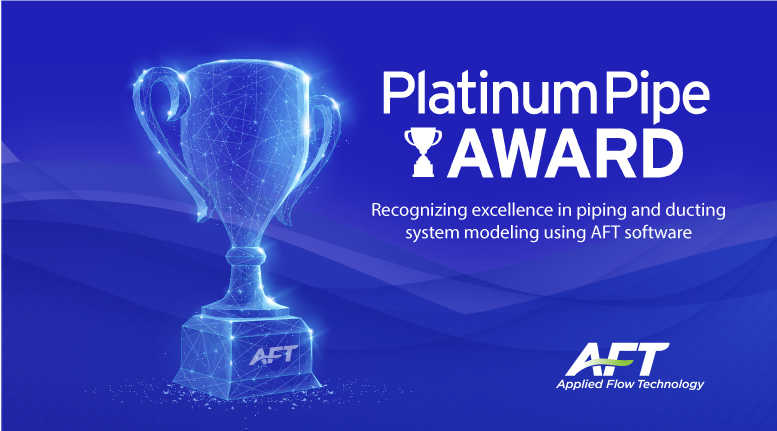AFT xStream FAQ's
Yes, AFT xStream can run off the network or local PC. When installed on a network, the number of concurrent users is limited to the number of licenses purchased. See the Installation page for information on installing the software with either a USB key or an eLicense.
See Custom Database Overview in the help documentation of the software.
Capabilities
No, AFT xStream cannot model liquid systems. AFT xStream’s solution methodology is built on a gas equation of state (Equation 9.5), which is not compatible with liquid flow calculations. AFT xStream can, however, model incompressible gas flow such as occurs in venting systems and many HVAC systems.
AFT xStream’s solution methodology is based on the ideal gas equation modified with a compressibility factor. This compressibility factor can be obtained from an equation of state model or property database. The effect of the compressibility factor is carried through the fundamental equation derivations, and thus accounted for directly.
AFT xStream has some heat transfer capabilities, such as modeling bulk fluid changes in temperature based on fluid source and fixed heat rate heat exchangers. However, AFT xStream does not currently model the internal and external heat exchange with the surroundings, though this has been considered for future versions.
Yes, every junction except for heat exchanger and compressor/fans is assumed to be isenthalpic. To be more specific, to satisfy the energy equation the process involves constant stagnation enthalpy. The static (thermodynamic) enthalpy can and does change based on the energy equation.
There are no theoretical limits to model size, but there are a few practical limits. First, AFT xStream accepts pipe and junction ID numbers up to 9999. This limits the model size to 10,000 pipes and 10,000 junctions. Before you reach that limit, however, you will likely encounter a limitation of your available RAM to hold all of the solver parameters. To determine how much RAM you need, add up the number of branches and tees in the model. Take the square of this number. Then multiply it by 32 to get the amount of RAM that must be available. For example, with 1,000 branches and tees, the square is 1 million, and after multiplying by 32 you need 32 million bytes of RAM (i.e., 32 MB).
Not directly, but one can effectively model a turbine using the heat exchanger junction. By specifying a heat exchanger pressure drop vs flow corresponding to the turbine pressure drop and specifying a heat rate out, you can accurately model the both the pressure drop and enthalpy reduction imposed by a turbine.
No, AFT xStream models only non-reacting flows.
No, models single-phase flow only.
Reporting
Multiple models can be run sequentially using the Batch Run feature.
Open the Output Control window from the Analysis menu, change to the Format & Action folder tab, and choose to select the Transfer Results to Initial When Done, Transfer Valve States When Done, and Save Model When Results are Transferred options.
Open the Output Control window from the Analysis menu, change to the Show Selected Pipes/Jcts folder tab, and select the pipes and or junctions you want to display.
Whereas the Output Control window allows you specify units for all parameters, when in the Output window viewing results you can quickly change the units for parameters in the tabular displays by double-clicking the column header.
Open the Visual Report Control window, change to the Show Selected Pipes/Jcts folder tab, and use the provided features to specify which pipes and junctions should display data and which should not.
Yes, the Scenario Manager lets you create dependent design cases where changes are inherited by children.
Modeling
AFT xStream solves the governing equations of compressible flow without simplifying assumptions and is thus more accurate than traditional handbook methods. See the Solution Method Overview article in the AFT xStream Help system for more information.
A junction has several advantages. First, solutions are given at all junctions, so the user can check the results at the junction. In contrast, Additional Losses are lumped into the pipe and it is not possible to give results at the loss. Second, many junctions (such as valves) have the ability to specify a CdA for sonic choking calculations. No such ability exists for Additional Losses; thus, sonic choking is always ignored for Additional Losses. Third, when using a junction the location in the pipe system of the pressure loss is specified. In other words, the upstream and downstream pipe lengths are specified. Since the location of the junction loss along a pipe can affect how much pressure is lost, the junction loss calculation is more accurate than the Additional Loss. A short explanation of this is that the pressure loss due to a K factor depends on the velocity squared. Typically, the velocity of the gas will change along the pipe, so the pressure drop of the K factor loss will depend on the local velocity. In the case of Additional Loss, it assumed to act like a friction factor and be evenly distributed along the pipe. The Additional Loss approach has the advantage of being able to specify multiple losses quickly and easily, and not cluttering up the model Workspace with numerous junctions.
There is an overlap in capability between the Tank junction and an Assigned Pressure junction, for example both allow up to 25 pipes connecting. Here are the differences. The Tank junction input pressure and temperature always corresponds to stagnation properties. In the Assigned Pressure junction, they can correspond to either static or stagnation properties. The ability to represent static conditions is the reason the Assigned Pressure can connect only to one pipe. Static conditions have a flow velocity associated with them and multiple pipes would have multiple velocities. If the stagnation option is used in the Assigned Pressure junction, it will behave identically to a Tank junction. Finally, the Tank junction can act as the reference pressure for a closed system, while the Assigned Pressure cannot.
Select the pipe or junction you want to close and choose Special Condition from the Edit menu. By default, AFT xStream will display a red “X” next to the pipe or junction label on the Workspace. It will also redraw your Workspace and show the closed sections of the model with dashed lines for the pipes and dashed outlines for each junction. Some special condition settings do not close the junction but have different purposes. For example, the normal condition for a relief valve is to be closed, so applying special conditions force it to be open.
See the Using Manufacturer Pressure Drop Data article in the AFT xStream Help system.
You can model a relief valve using either a Relief Valve junction or a regular Valve junction. The Relief Valve junction is always closed when you run the model (unless you set its Special Condition), and AFT xStream will run the Solver to determine if sufficient pressure exists to crack it. If so, it will run the Solver again with the relief valve open. If you know the condition you are modeling will crack the relief valve, it is more efficient to just use a regular valve junction. In this case, AFT xStream assumes the valve is open from the start, and does not have to go through the extra step of solving the network to check for sufficient system pressure to crack it.
The definition of Cv for a gas valve differs among industries and vendors. AFT xStream uses the ANSI/ISA-75.01.01-2012 standards to define Cv. If the valve Cv does not match that standard, the next best option would be to use a spreadsheet to generate a pressure drop profile over the anticipated flow rate range and enter that data into AFT xStream as a Resistance Curve for the valve.
You must specify the CdA on the Optional tab for the junction. AFT xStream uses this as the basis area for sonic calculations.
You can create gas mixtures using either the included NIST REFPROP database or the optional Chempak add-on database. The AFT Standard gas database does not support mixtures. To create a mixture, choose either the NIST REFPROP or Chempak databases, click the “Create New Mixture and Add…” button, and specify the desired components and composition of the mixture.
Set the elevations in the elevation fields for each junction. Pipes are assumed to be straight between junctions. If you need to model a system other than a stationary earth-based system, the gravitational acceleration can be changed in the System Properties window.
No, Panhandle or Weymouth can be specified by selecting them in the Pipe Properties window in AFT Arrow, but not in AFT xStream.
Enter fan data in the Compressor/Fan Properties window, and set the fan setpoint directly. No entry is assumed to be 100% speed. For speeds other than 100%, AFT xStream uses the affinity laws to adjust the curve.
Interface
Open the Junction Properties window, click the Optional folder tab, and then click the Change Icon button.
No, icons are in a resource file that cannot be edited by the user.
Use the Merge feature on the File menu to merge models together.
There are three ways to enable or disable the Highlight feature. The first is toggling the option on the Options menu. The second is pressing the F2 function key while in a Pipe and Junction Specifications window. The third is double-clicking the anywhere in the Pipe and Junction Specifications window.
The Global Pipe Edit and Global Junction Edit windows offer tremendous power and flexibility in changing all or parts of your model input all at once. See Global Pipe Edit and Global Junction Edit topics for more information.
Use the Find feature to quickly find a pipe or junction.
Select the pipe or pipes and choose the Reverse Direction feature on the Arrange menu.
In the Model Data tabular displays double-click on a row to launch that pipe/junction’s properties window.
If you hold down the CTRL key when completing the pipe drawing (just before releasing the mouse button), the Pipe Drawing tool remains active, and you can draw a series of pipes without returning to the Toolbox each time. If you double-click the Pipe Drawing tool it remains active until you click it again a single time. This allows you to draw a series of pipes without returning to the Toolbox each time.
Use the Segment Pipe tool found on the Arrange Menu.
Open the pipe or junction specifications window, click the Optional folder tab, and check or clear the check boxes for showing the number or name. This will affect the current pipe or junction. You can set the default behavior in the Workspace Preferences window available on the Options menu.
You can use the Global Edit windows to change the current model settings for all pipes or junctions or only selected ones. See the Global Pipe Edit or Global Junction Edit window for more information.
The preferred units can be chosen when the software is first opened by selecting unit sets in the Startup window. Alternatively, this can be done by going to the Tools menu and opening User Options. On the left pane select Preferred Units under the Unit System header. You can then select a commonly used set of units, or change individual unit types.


